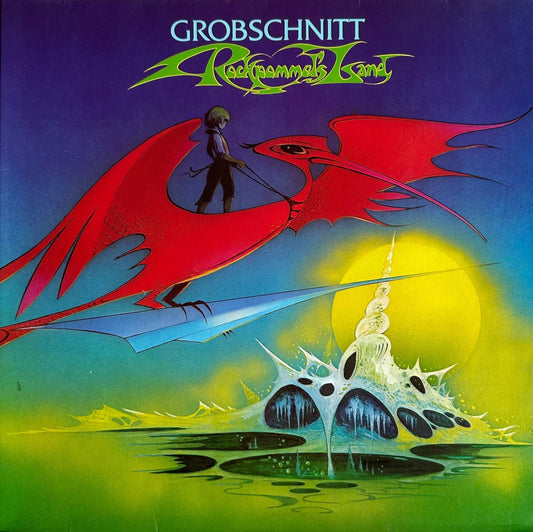When Giovanni Battista Sammartini (c. 1700-1775) shows up in music history textbooks, it’s as inventor of the symphony. Or at least as the first to the use of the word “sinfonia” to mean a multi-movement instrumental work. But Sammartini wrote other genres as well, a fact celebrated on some recent recordings.
As a composer with one foot in the Baroque and the other in the up-and-coming “Classical” period, Sammartini focused much of his energy on purely instrumental music. And while he spent his whole life in Milan, his fame spread throughout Europe. He was a teacher of C.W. Gluck and an inspiration to J.S. Bach.
In the late Baroque period, concertos had become a favored type of piece because they contrasted the sound of the many with that of the few. Or the one. (Thank you, Mr. Spock.) Sammartini jumped on that bandwagon, and we have ten or so extant concertos by him, some for solo instruments and some concerti grossi, for two or three soloists with orchestra.
In his live recording on EMA Vinci, David Bellugi performs the Flute Concerto in F major on recorder, a substitution that would not have raised any eyebrows in Sammartini’s day, when recorders were far more common than flutes. (Fun fact: the Italian term for recorder is flauto dolce, or “sweet flute.”) This concerto is structured in what had become the standard three-movement format, with two up-tempo movements balanced by a slow one in the middle.
Bellugi’s performance, while earnest and passionate with some impressive technical passages, is at times shrill and uneven. The flutist/recorder player and musicologist died not long after making this recording in 2017, so perhaps poor health was a factor. He is not helped much by the Krasnoyarsk Chamber Orchestra, conducted by Mikhail Beniumov. You can hear in the opening Allegro how the playing lacks the buttoned-down tightness that gives pre-Classical galant style its courtly elegance.
The second movement is labeled Siciliana, a popular Baroque dance-movement type that’s sort of a slow, sexy gigue in a minor key. Bellugi and Beniumov choose a good tempo, but the mood is more sorrowful than mysterious.
Another issue I have with the Bellugi recording is its pitch. Playing concert A at modern 440 Hertz is an odd choice for a music historian performing mid-18th-century Italian music. Happily, there’s another recent recording of this same piece at the more likely authentic pitch, around A=415 Hz. Alexis Kossenko’s recording is superior in pretty much every other aspect as well.
On the album Soave e Virtuoso (Aparté), Kossenko also plays the concerto on soprano recorder while he conducts the instrumental ensemble Les Ambassadeurs. Here’s the third movement, marked Allegro assai, in the quick 6/8 gigue time typical of a finale. You’ll hear the vertically aligned ensemble playing that provides a sense of stateliness: picture men in powdered wigs and buckled shoes bowing to corseted women in the palace ballroom.
The recording also includes music of Vivaldi and Tartini. Only one Sammartini movement is available on Youtube, but you can listen to the whole album on Spotify here:
Besides concertos, Sammartini also championed another favorite 18th-century genre, the sonata. In 2018 Sony digitally re-released a fine old analog recording by cellist Leonard Rose and pianist Leonid Hambro, originally on Columbia Masterworks. It’s part of Sony’s Leonard Rose – The Complete Sonata and Concerto Recordings.
While the focus of the original 1955 album is Schubert’s Arpeggione sonata, Rose also tacked on some Boccherini plus Sammartini’s three-movement Sonata for Cello and Basso Continuo in G Major. Because the solo instrument is in the low range, the keyboard alone covers the role of continuo without another instrument doubling the bass line.
It’s especially interesting to hear this great cellist playing in an era before “historical practice” was a concept. Sure, the shape of the phrases is anachronistically free-wheeling, but that cello tone is so rich, the bowing so precise, and the coordination with Hambro so simpatico, that I couldn’t care less when the piece was written. Here’s the first movement, Allegro:
On the historical-performance side of things, Susanna Piolanti has put out a new recording on the Tactus label of Sammartini sonatas for solo harpsichord (which the composer would have called a clavicembalo).
The Adagio second movement of Sonata No. 2 in G major demonstrates Piolanti’s mastery of the period’s flowery ornamentation, even if the playing lacks the longing and intensity that the score’s harmonic motions seem to call for.
Piolanti is more convincing in the second movement of the Sonata in E-flat major, marked Spiritoso, letting phrases hang for a breath to emphasize chords:
Considering he spent nearly 50 years as maestro di cappella at the Basilica of Sant’Ambrogio in Milan, it’s no surprise that Sammartini left behind some sacred vocal music. Nar Classical recently re-released a Naxos recording of two sacred cantatas performed by the ensemble Capriccio Italiano under the direction of Daniele Ferrari.
I’m sorry to say that the performance is generally weak, with unfocused orchestral playing and singing that just doesn’t have much power. Here’s tenor Vito Martino singing an aria from Pianto di Maddelena al sepolcro (The weeping of Mary Magdalene at the tomb):
At this point I had hoped to have a better recording of Sammartini sacred music to recommend instead, but somehow this repertoire does not seem to be attracting top-flight artists. So I’ll provisionally recommend the least distressing of those I dug up: Budapest Madrigal Choir and Budapest Strings, conducted by Ferenc Szekeres, performing Magnificats by Vivaldi, Albinoni, Sammartini, and Caldara. It’s on Hungaraton.
One important parting note: Giovanni Battista had an older brother, Giuseppe, who was also a gifted composer. If you’re in the market for Sammartini recordings, do pay attention to the first name! There are a couple of nice Giuseppe Sammartini concerto albums released recently, and he deserves to be regarded as separate from his more famous sibling.


